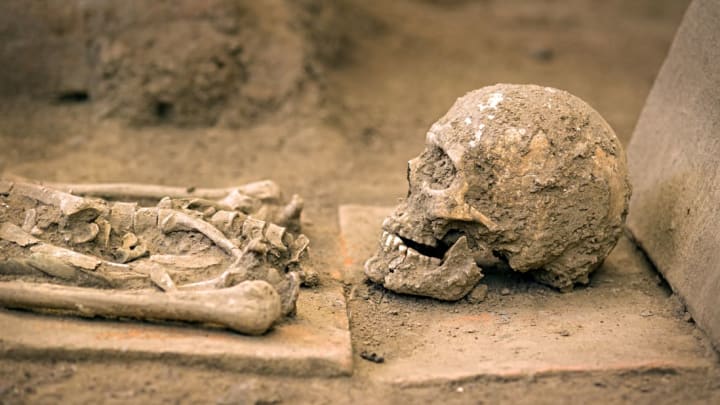In 2014, archaeologists uncovered a skeleton in Kamień Pomorski, Poland, with a brick wedged in its mouth and stakes driven through its legs. They believed the man was put to death in the 18th century because townspeople thought he was a vampire.
Now, genetic and forensic analysis has shown that the vampire burial site didn't contain a man at all: It was a 5-foot-6-inch, blue-eyed, blonde woman who was at least 65 years old when she died. Newsweek reports that scientists at the Pomeranian Medical University in Szczecin, Poland are now making a 3D computer model of the woman’s skull, which they plan to use to recreate what her face looked like.
The Forensics Genetics Unit at the university will then build her face on a physical model from layers of plastic material and reveal it to the public within the next few months. Andrzej Ossowski, the head of the unit, told the website Science in Poland that he hopes a museum might display the rendering. “We want to show that with the help of modern methods, we are able to replace skeletons that are very common in museums with 3D models based on research,” he said.
He said that townspeople may have killed the woman because they thought she was a witch, and they gave her an “anti-vampiric” burial to prevent her from rising from her grave à la Nosferatu. The brick in her mouth was meant to weigh her down—in other burials a sickle might have been placed across the neck of the body, which would slit the revenant's throat should it try to rise.
We often think of Salem when it comes to witch trials, but they were common throughout Europe before the 19th century, and archaeologists have discovered “anti-vampiric” graves in Poland, Bulgaria, and Italy. Wondering if you might have qualified as a witch during the 17th-century period of Puritan paranoia? Find out here.
[h/t Newsweek]
